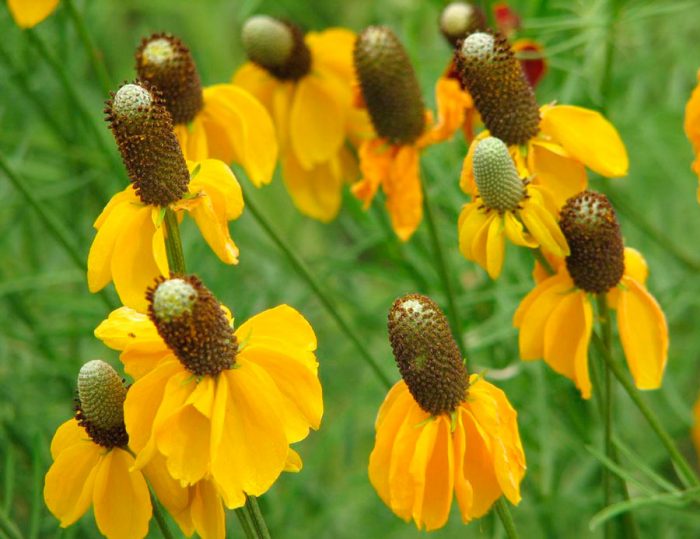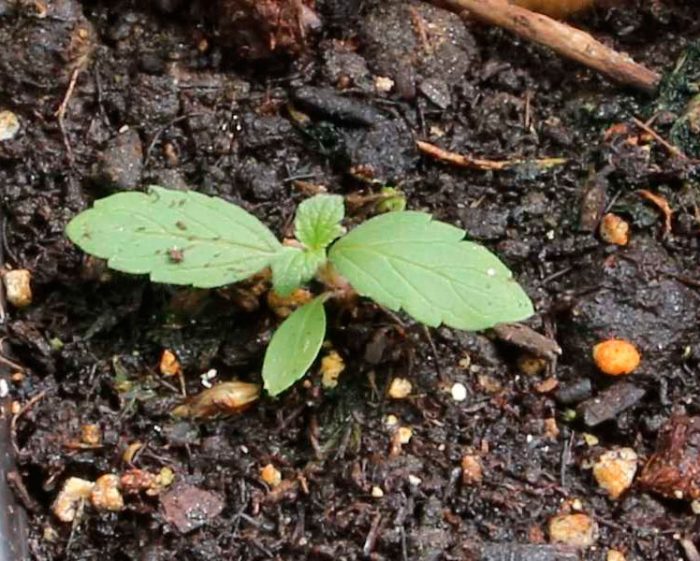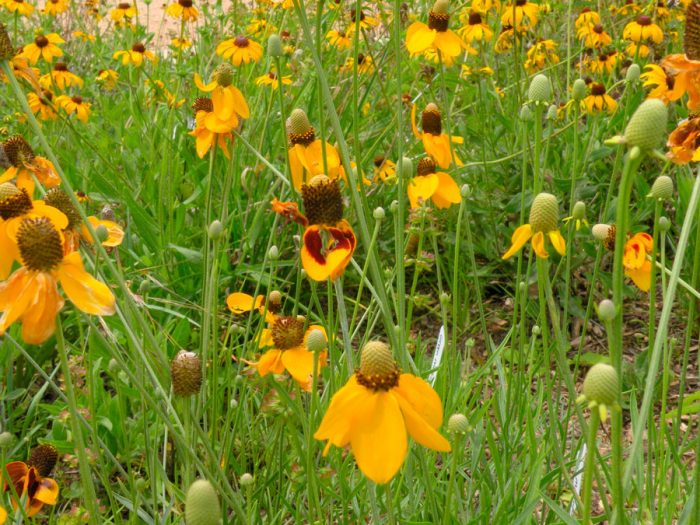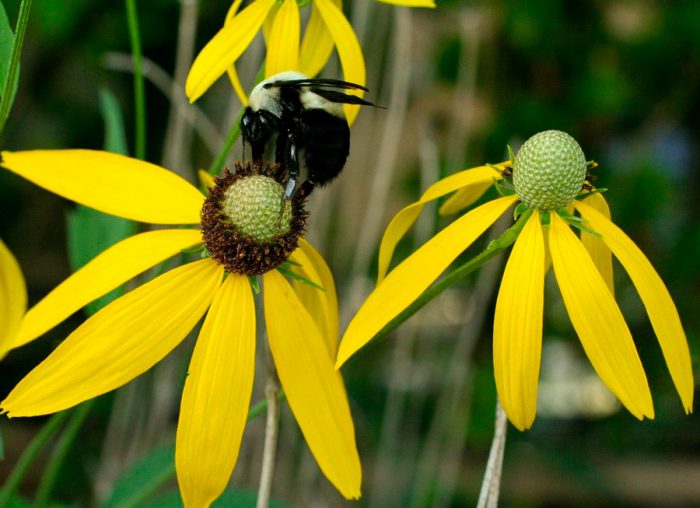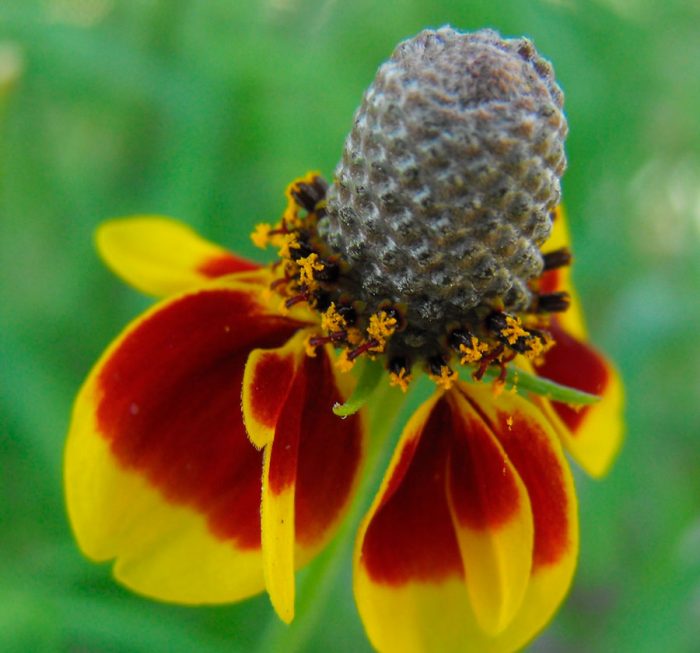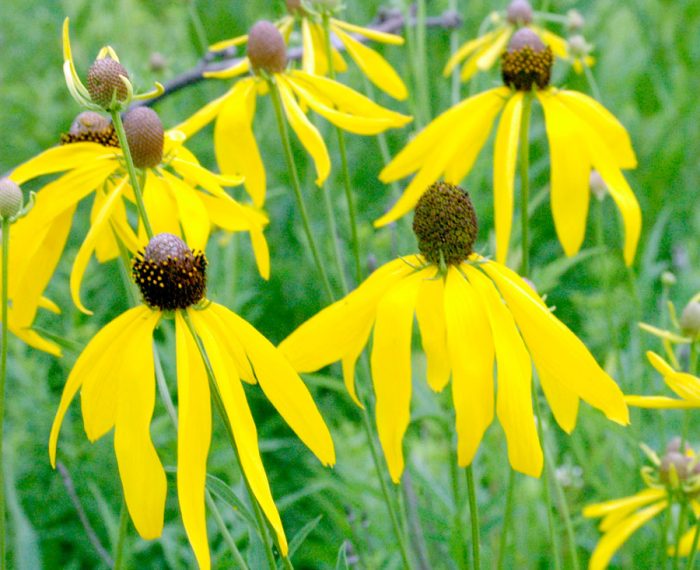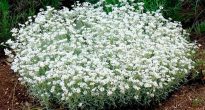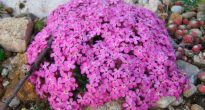The plant ratibida (Ratibida), also called lepakhis, belongs to the tribe Sunflower of the Asteraceae family. Representatives of this genus are popularly called “prairie echinacea”. Most often, gardeners cultivate only the columnar "Mexican hat" or "sombrero" type of ratibide. This plant comes from the territory of Central and North America. They began to cultivate it since the beginning of the 19th century.
Content
Features of ratibide
The genus of ratibid is represented by annuals and perennials. There is pubescence on the surface of the aboveground part of the bush. Branched, erect, leafy shoots have a rough surface, and their height can vary from 0.3 to 1.2 meters. The root system of such a plant is a branched rod system. The length of deeply divided leaf plates is 3-15 centimeters, they are colored greenish-gray. The inflorescences-baskets of such a plant are outwardly similar to the flowers of rudbeckia. Their cone-shaped center, which includes tubular flowers, reaches about 10 mm in diameter, it sticks up by 20-30 mm, and ligulate radiant flowers with a length of up to 30 mm hang down from its dark base. The ligulate flowers can be brownish-red, yellow, brown, brown with a purple border and red with a yellow border. The opening of the middle flowers occurs gradually from the bottom up and after only half a month the height of the cone can reach 40-50 mm. The fruit is a winged achene, about 0.4 cm long.
Growing from seeds
The ratibide is propagated by seeds and they do it both through seedlings and by the non-seedling method. Sowing seeds in open soil can be carried out in late autumn or early spring, when the ground has not yet thawed completely. If sowing is carried out in autumn, then seed material does not need pre-sowing preparation. It's just that not very deep grooves are made in the prepared area, and then the seeds are evenly distributed in them, they should be covered with a layer of sand on top and covered with spruce branches. When sowing in spring, seed material will require mandatory preliminary cold stratification. To do this, it is placed for 4 weeks in a place where the air temperature is kept within 0-5 degrees.
However, the most popular among gardeners is the seedling breeding method of ratibid.Seeds are sown for seedlings in winter, or rather, in mid-February. Peat cups should be chosen for sowing, because seedlings react extremely negatively to both picking and transplanting. To fill the cups, a moist and light soil mixture is used, which includes coarse-grained sand, sod earth and peat (1: 1: 1). The seeds do not need to be buried, they are simply pressed into the surface of the soil mixture, and the container is covered from above with glass (film). Then the crops are transferred to a well-lit place, where it is always warm. The first seedlings should appear after about half a month, after which the shelter is removed, and the plants are provided with a large amount of bright sunlight, which must be necessarily diffused.
Planting and caring for ratibid in the garden
Care features
Planting grown and matured ratibid seedlings into open soil is carried out after the threat of recurrent spring frosts has been left behind. However, when 15 days remain before transplanting, the seedlings need to be hardened. To do this, they are transferred every day to fresh air (terrace, balcony or garden), the duration of such a procedure should be increased gradually, starting from several hours, while for hardening, you need to choose a place that will have reliable protection from drafts and precipitation.
An area suitable for growing such flowers should be well lit or slightly shaded. And the soil should pass water and air well and it is best if it is loam or clay soil. Ratibida has good tolerance to slightly acidic, slightly alkaline or slightly saline soil. Before sowing, the site must be prepared; for this, it is digged, during which 1 tbsp is introduced into the ground. wood ash and 10 liters of compost per 1 square meter.
It is recommended to choose a cloudy day or evening for planting seedlings. A distance of at least 25 centimeters is maintained between the landing pits. It is necessary to plant bushes together with an earthen lump, and if it grows in a peat cup, then the planting is carried out with it.
In the first year of growth, the bushes rarely bloom; this can only happen in a very hot summer, shortly before autumn. As a rule, many gardeners cultivate such a flower as an annual, but it can be grown in the open field for 3 years. At the beginning of the spring period, the bushes are removed from the soil, after which they are divided into parts. Delenki are planted in separate pits in a new area. If the transplant is not carried out, then at the beginning of the growing season the shoots of the bushes will become woody.
How to water and fertilize
It is quite easy to grow ratibid in your garden, besides, it reproduces well by self-seeding. In order to exclude the possibility of uncontrolled reproduction of such a culture, it is necessary to promptly cut off the inflorescences that have begun to fade.
Such flowers need watering only during a prolonged drought, for this they use water that has settled well and warmed up in the sun. If it rains systematically in the summer, then additional watering of the ratibide is not needed. When the bushes are watered or it rains, the surface of the soil on the site must be loosened, at the same time all weeds should be removed.
Such a plant does not need feeding, all the more if it is grown in nutritious soil, the fact is that it has a tap root, which can extract nutrients from deep soil layers. If the soil contains a lot of nutrients, then this will cause the active growth of green mass, which will have an extremely negative effect on flowering.
Diseases and pests
Such a flower has a very high resistance to harmful insects; it is also very rarely affected by various diseases.In some cases, during prolonged rains, the bushes can rot, in this case it is recommended to dig up the affected plants, and the land where they were grown is treated with a solution of a fungicidal agent. Also, in some cases, a whitish bloom forms on the surface of the aboveground part of such a plant, which indicates its defeat by powdery mildew. Sick bushes are treated with a solution of soda or a fungicide containing sulfur, they are sold in a special store. If the bushes are very badly affected, then it is better to remove them from the soil and destroy.
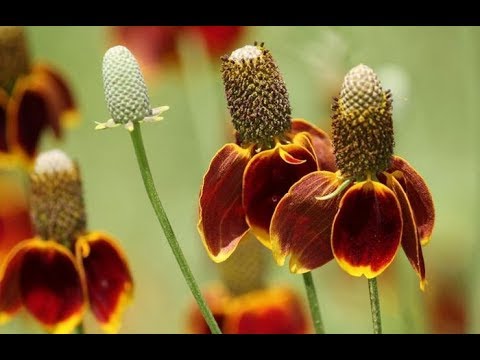

Watch this video on YouTube
Main types and varieties
Ratibida columnifera
In addition to the elongated or columnar ratibid (Ratibida columnifera), which was described in detail above, another species is cultivated by gardeners.
Ratibida pinnata (Ratibida pinnata = Rudbeckia pinnata)
This perennial is native to North America. The convex middle of a dark bronze shade consists of tubular flowers, and around it are ligulate flowers of a deep yellow color. During opening, the disc is greenish-gray, but gradually it turns brownish-black. Bushes reach a height of 1.2-1.5 meters. Shoots are hairy and stiff, and the pinnate leaf plates consist of 3–7 serrated lance-shaped segments. This type is distinguished by its unpretentiousness and resistance to frost, droughts, diseases and harmful insects.
The elongated ratibide has quite popular varieties and varieties:
- Pulcherrima - the color of the petals is wine-red, they have a yellow border;
- Yellow Cheyenne - ligulate flowers of a rich yellow color;
- Red Midnight - marginal flowers of a dark red hue.
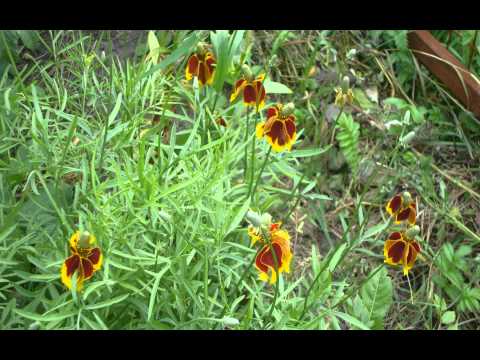

Watch this video on YouTube


